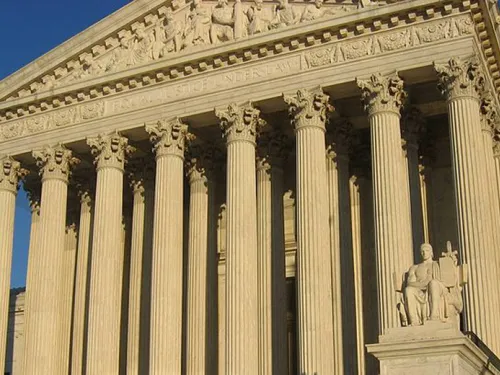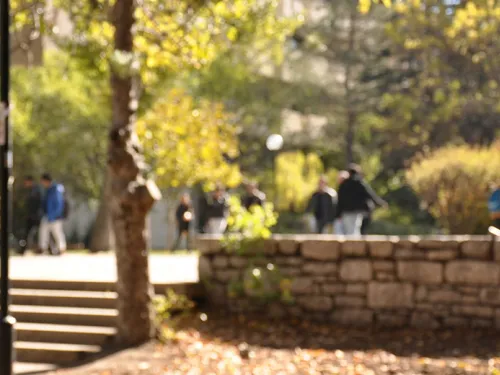The Pyramid of Hate illustrates the prevalence of bias, hate and oppression in our society. It is organized in escalating levels of attitudes and behavior that grow in complexity from bottom to top. Like a pyramid, the upper levels are supported by the lower levels; unlike a pyramid, the levels are not built consecutively or to demonstrate a ranking of each level. Bias at each level reflects a system of oppression that negatively impacts individuals, institutions and society…
Search Results
446 Results

For Educators | For Parents, Families, and Caregivers | For Students Tweens and teens spend a lot of time using technology, much of it positive, but it can move into cyberbullying and other online mean behavior. Below are tips young people can use in their digital lives to help them have a positive online experience and effectively respond to negative online behavior and cyberbullying. Before going online...Set guidelines.Limit electronic use.Consider what it means to be responsible online…

ADL Center for Tech and Society offers a social media explainer to help guide online and offline dialogue around the war in Gaza between Israel and Hamas.

Teach students what biased language is and help them reflect on the reasons why people use it and how they can address and challenge biased words and language.

Tips and guidance for helping K-12 schools encourage students to become civically engaged, provide safety and protection for all students, and adhere to students’ First Amendment rights.

When violence is in the news, it’s important to watch out for biases that are present in and activated by news coverage and commentary. When Israel is in the headlines, antisemitic incidents spike and antisemitic rhetoric on social media also increases. Additionally, geopolitical conflicts in the Middle East often activate bias towards people of Middle Eastern descent. War and violence inspire strong emotions, which can activate conscious and unconscious biases about groups of people. It…

Bias-biased incidents take place in schools everyday. Use our teaching tools, lesson plans, discussion guides and other resources to help with your short and long-term incident response.

For Educators | For Parents, Families, and Caregivers | For Students Here are some simple things you can do to be an ally to targets of name-calling and bullying. And remember—always think about your safety first when deciding the best way to respond. 1. Support targets, whether you know them or not.Show compassion and encouragement to those who are the targets of bullying behavior by asking if they’re okay, going with them to get help and letting them know you are there for them…

Tips and strategies for supporting Jewish students when topics like the Israeli-Palestinian conflict are in the news.

This parent/family discussion guide helps families engage in a discussion about the October 7, 2023 Hamas attack on Israel, its aftermath and how families can help.

Teach students about the history of the N-word, its harm and impact and engage them in exploring school-based scenarios.

Engage your family in the conversation about tweens and their experiences in digital spaces and with cyberbullying.

Sport is the setting of some of humanity’s greatest stories. Through the perspective of athletes, teams, fans, coaches, and others, we experience narratives filled with emotions and learn life lessons, like the fulfillment of success and the devastation of failure. Some of these stories are as short as an afternoon, like a pickup basketball game with friends, while others are lifelong journeys, such as unwavering fandom for a favorite team or the privilege of competing on the world&rsquo…
New York, NY, June 8, 2023 … ADL (the Anti-Defamation League) today called for major American corporations, government agencies, and non-profit organizations to pledge to fight antisemitism in their workplaces, and announced plans to audit and report on progress in 2024. By taking the “ADL Workplace Pledge to Fight Antisemitism," organizations agree to actively prevent antisemitism in their workplaces, including addressing antisemitism in Diversity, Equity, and Inclusion programs,…

This discussion guide about the musical Parade will help middle and high school students and adults reflect upon and discuss the themes and artistic elements of Parade.

Commemorated each year in the month of June, LGBTQ+ Pride Month honors the 1969 Stonewall uprising in New York City. In June of 1969, patrons and supporters of the Stonewall Inn staged an uprising to resist the police harassment and persecution to which LGBTQ+ Americans were commonly subjected. This uprising marked the beginning of a movement to outlaw discriminatory laws and practices against LGBTQ+ Americans. Today, LGBTQ+ Pride Month celebrations include pride parades, picnics, parties,…

Engage students in exploring narratives of Jewish athletes throughout history to embrace diverse experiences of Jewishness and connected identities.

Explore with young people the experiences of people with disabilities, the bias and discrimination they face, and the struggle to continue fighting for their rights.

Teach students how to examine how antisemitism manifests in the context of sport and the impact of this form of oppression.

Students explore examples based on young people’s real-life experiences of identity-based bullying and identify ways that their school can address and reduce this type of bullying.









